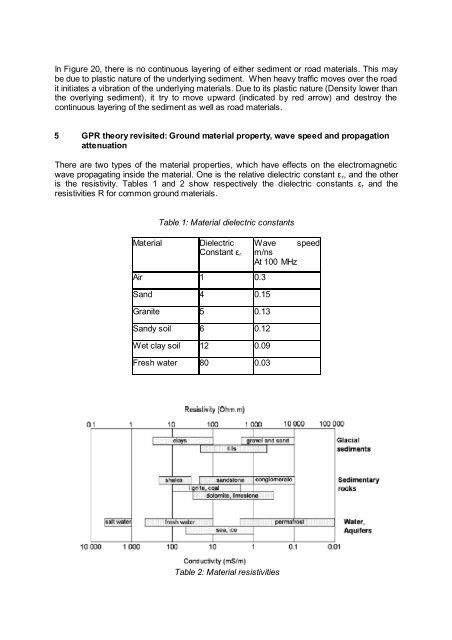GPR for river dyke - GSB
GPR for river dyke - GSB
GPR for river dyke - GSB
Create successful ePaper yourself
Turn your PDF publications into a flip-book with our unique Google optimized e-Paper software.
In Figure 20, there is no continuous layering of either sediment or road materials. This may<br />
be due to plastic nature of the underlying sediment. When heavy traffic moves over the road<br />
it initiates a vibration of the underlying materials. Due to its plastic nature (Density lower than<br />
the overlying sediment), it try to move upward (indicated by red arrow) and destroy the<br />
continuous layering of the sediment as well as road materials.<br />
5 <strong>GPR</strong> theory revisited: Ground material property, wave speed and propagation<br />
attenuation<br />
There are two types of the material properties, which have effects on the electromagnetic<br />
wave propagating inside the material. One is the relative dielectric constant ε r, and the other<br />
is the resistivity. Tables 1 and 2 show respectively the dielectric constants εr and the<br />
resistivities R <strong>for</strong> common ground materials.<br />
Table 1: Material dielectric constants<br />
Material Dielectric<br />
Constant εr<br />
Air 1 0.3<br />
Sand 4 0.15<br />
Granite 5 0.13<br />
Sandy soil 6 0.12<br />
Wet clay soil 12 0.09<br />
Fresh water 80 0.03<br />
Table 2: Material resistivities<br />
Wave speed<br />
m/ns<br />
At 100 MHz


